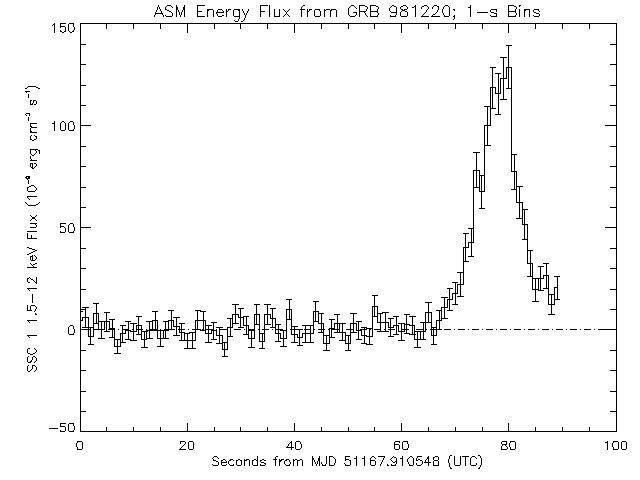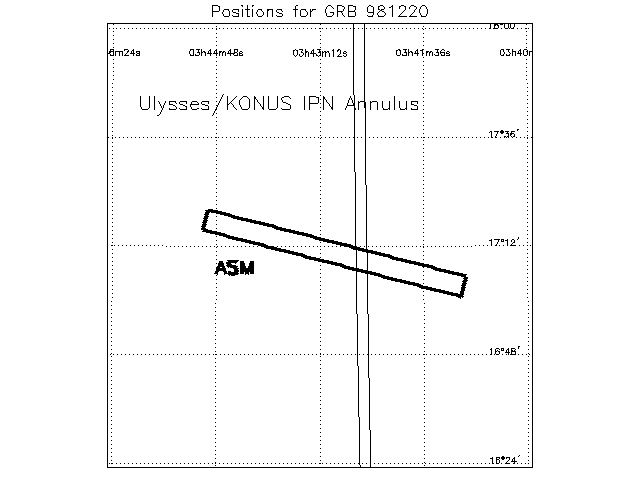
D. A. Smith (MIT) reports on behalf of the RXTE/ASM Team at MIT and NASA/GSFC:
(See GCN Circ. 159)
The RXTE All-Sky Monitor has detected a hard X-ray flare, beginning within a few seconds of 1998 December 20, 21:52:21 (UTC) and lasting for about 20 s. The flare consisted of a single symmetric peak that reached a maximum flux (1.5-12 keV; 1-s bins) of 1.2+-0.1x10^-7 erg cm^-2 s^-1.

The event was detected in a single camera and was localized to an error box 5.0' x 60.0' (full width; 90% confidence including a rough estimate of systematic error due to calibration drift), centered on the position: R.A. = 03h43m01s, Decl. = +17o09'.0 (J2000.0) at a position angle of 75.54 degrees east of north. This position is inconsistent with any known X-ray sources.
Kevin Hurley et al. report an IPN annulus in GCN Circular 160. This annulus is centered at RA(2000)=347.373 degrees, Decl(2000)=+7.336 degrees, with a radius 67.134 +/- 0.020 degrees (3 sigma). The ~2.4' x 4.5' intersection error box with approximately 11 sq. arcmin. area is defined by the four corners:
RA(2000) Decl(2000) 3h 42m 28.5s 17o 06.3' 3h 42m 29.0s 17o 11.1' 3h 42m 39.0s 17o 11.6' 3h 42m 38.5s 17o 06.8'
See also the IPN archives for further information, under 981220.

To see a list of everything catalogued within a 30 arcminute radius of RA=55.6375 and Dec=17.155, click here.
Please visit the SIMBAD site to see their terms of use.
Please email Don Smith if you have any questions about these results.